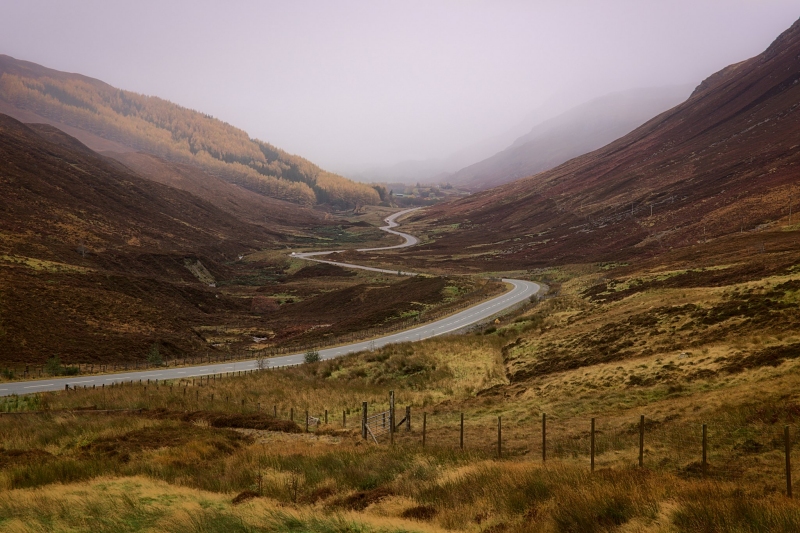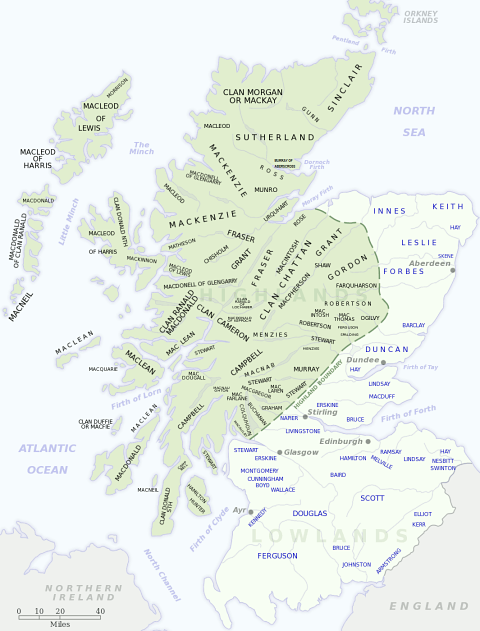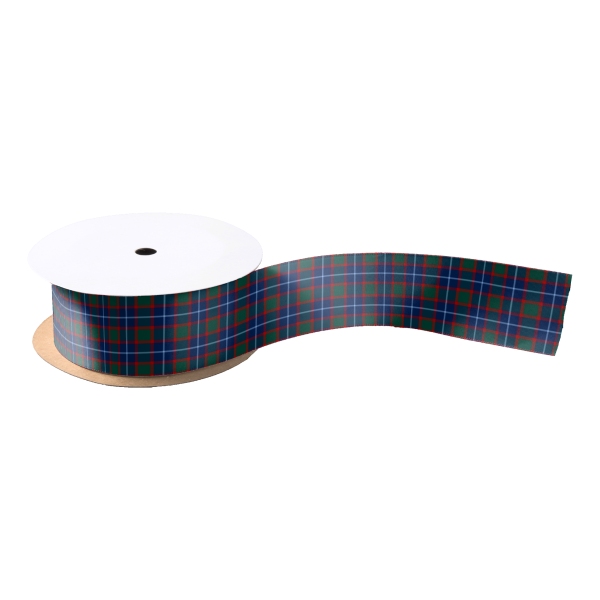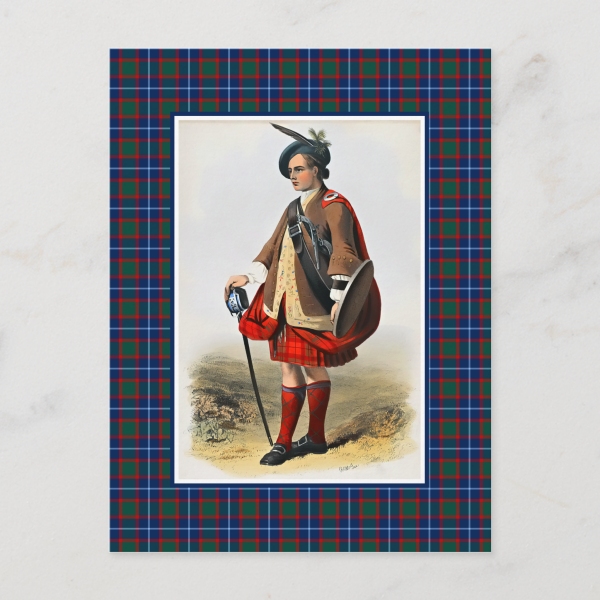
Motto: Timor Omnis Abesto (Let fear be far from all)
Historic Seat: MacNab Castle
District: Ross-shire, Perthshire, Strathearn
Associated Surnames: Abbot, Abbotson, Gilfillan, Hendrie, Hendry, Kendrick, MacAndeoir, Maceol, MacHendrie, MacHendry, MacKendrick, MacKenrick, MacKnight, MacNair, MacNayer, MacNiven, MacNuir, MacNuyer, MacVicar, Porter
Associated Tartans:
Early MacNab Genealogy and History:
(Excerpt from "The Scottish Clans and Their Tartans", James Grant, 1906)
In the ancient Gaelic genealogy, so often referred to, this clan is deduced from Ferchar, son of Feredach, and in Gaelic they are called Clan-an-Aba, from their chief ancestor having been the Abbot of Glendochart, who lived between 1150 and 1180. As his lands were within the glen of that name, they were inherited by his descendants. The Abbot of Glendochart was a man of such consequence that in the reign of William the Lion he was joined with the Earl of Atholl in having the rule and management of Argyll-shire, at that time when the royal authority could not be entrusted to any one belonging to that wild and warlike district.
The MacNabs having joined the MacDougals, Lords of Lorne, against Robert I, suffered the loss of the greater part of their lands, but they still retained a small portion called Bowaine or Bovin. At Inch Ewen, in Breadalbane, says General Stewart (in 1822) "a family of the name of MacNab had occupied the same farm for nearly four centures till within these last few years, when the last occupier resigned."
During the reign of James IV the MacNabs and the Neishes, in the vicinity of Lochbearn, had been at bitter feud. Skirmishes between the clans had been frequent, and at length a regularly pitched battle was fought between them on the confines of a glen north of the foot of Lochearn. Victory declared for the MacNabs; only a remnant of the Neishes escaped; and their chief fell, covered with wounds, after many of the MacNabs had been slain by his sword. On an island in Lochearn the remnant of the Neishes took shelter; their head was an old man, a near kinsman of the late chief, and they lived by plunder.
In the time of James V the chief of the MacNabs, who lived in Kennil House, sent a gillie1 to Crieff for provisions at Christmas time, but on his return he was waylaid and robbed by the Neishes. MacNab of that Ilk, whose eldest son, John, was ironically known as Ian min Mac an Aba, or "Smooth John MacNab," had twelve sons, all men of great strength. These young men were gloomily meditating revenge in the evening, when their father entered and said, "Bha'n oidhch' an oidche, na'm bu ghillean na gillean" (The night is the night, if the lads were the lads.) The dark hint was taken; each belted on his arms, and led by their brother John, they carried a boat on their shoulders from Loch Tay to Loghearn, on which they launched it, and rowed over to the island. In the house of the Neishes all was dark and silent. Smooth John dashed open the door with his foot, and rushing in, the twelve brothers put every man therein to the sword save one and a boy, and cutting off their heads, returned with all the plunder they could collect to Kennil House. There Smooth John held up the head of the chieftain of the Neishes, exclaiming, Na biodh fiamh oirbh!" (Be in fear of nothing); and old MacNab, while contemplating the bloody heads with extreme complacency, said, "The night was the night, and the lads were the lads!"
In 1578 caution in 500 merks was found by Colin Campbell of Airdbaith, for "Allestar Barryth Maknab, son of Allester M'Nab (sic), that he will appear upon the 3rd day of the nixt justice air of the Sherefdome of Perth, to underly the law for all crymes that may be imput to him."
When Montrose was in arms for the King in 1645, among the clans who joined him at Foredoun in 1645, Menteith in his "History of the Troubles" mentions "the clans of Mackgregor and Macknab, with a good number of the Farquharsons of the shire of Mar." In 1646 John MacNab of that Ilk, with his clan, with Lord Napier and Drummond of Balloch, garrisoned Montrose's patrimonial Castle of Kincardine for the King. On this Major-General Sir John Middleton drew off a body of infantry and cavalry with a battering train for Stirling, and bent the guns on the castle from the opposite side of the glen. For fourteen days the MacNabs defended the fortalice, till the concussion of their firearms caused the water in the well to subside, on which they all made a sally forth on the night of the 15th March, and cutting their way through Middleton's guards, escaped to join Montrose. John MacNab of that Ilk, though leading 300 of his clan, was taken and sent to Edinburgh, but escaped, to die on the field of Worcester.2
In 1654 the Laird of Glenorchy was empowered by General Monk to make up certain losses he had sustained out of the chief of MacNab's estates, "and to assist in putting the haill MackNabs out of the country," dated Dalkeith, 21st November. On the 18th of the same month there was another letter written by Monk to Glenorchy, "desiring thim to forbeare to trouble the widowe of the deceased Laird of M'Nab, as she has paid sesse and lived peaceably since her husband's death." And this protection was also given to Archibald MacNab of Agharm.
The last descendants of the ancient chiefs are now settled in Canada.
The old burial-place of this tribe is at Killin, immediately below the bridge that spans the Dochart, on a pictureque island covered with fine sward and shaded by pine trees, amid which are what seem the remains of an ancient chapel; but, save one, no stone or memorial is there. It is a little marble slab built into the wall, to the memory of a son of MacNab of that Ilk - Francis Maximus MacNab, Lieutenant of the Gordon Highlanders, killed at Almeida in 1811. As his regiment was not there, he must have volunteered for special service.
(End excerpt)
Next page: Clan MacNaughton
Footnotes:
1 gillie: a male attendant on a Scottish Highland chief
2 The Battle of Worcester (1651): The Battle of Worcester was fought on 3 September 1651 at Worcester, England and was the final battle of the English Civil War. Cromwell's army defeated King Charles II's army, of whom the vast majority were Scottish. Read more about the Battle of Worcester at Wikipedia.

Distribution of Scottish clans and families
View larger map at Wikimedia Commons

Browse the Clan MacNab Tartan Collection with home decor, personal accessories, crafting, paper products, and more.

Browse the Perthshire District Tartan Collection with home decor, personal accessories, crafting, paper products, and more.

Clan MacNab Postcard: Digitally cleaned and enhanced vintage illustration with tartan frame.